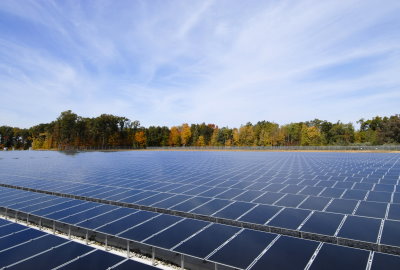Building Back Green, decarbonisation, and electrification: impacts on energy forecasting
Earlier this week, the UK Government published its Net Zero Strategy: Build Back Greener Plan. In his foreword, Prime Minister Boris Johnson announced, “Our strategy for net zero is to lead the world in ending our contribution to climate change, while turning this mission into the greatest opportunity for jobs and prosperity for our country since the industrial revolution.” Essentially, this Plan is the UK Government’s marker in the sand, or statement of intent ahead of the crucial COP26 meeting in Glasgow next month.
Hopefully, the other COP26 nation states will publish similar strategy plans, but perhaps not expressed in such bombastic terms. However, after today’s leak to the BBC revealing how some countries are trying to change a crucial scientific report on how to tackle climate change, and asking the UN IPCC to play down the need to move rapidly away from fossil fuels, the omens are not good.
Assuming a degree of international consensus around the principles enshrined in the Build Back Greener Plan, there will be some serious implications for the conduct of operations in the UK and EU energy markets, not least of which will be forecasting, trading, and balancing. Even if there is no consensus, the UK can be expected to go it alone, followed to some extent by the EU, so irrespective of the outcome of COP26, the energy markets will still need to respond.
From a forecasting point of view, it is obvious that the move to decarbonisation will cause demand destruction in fossil fuels and a switch to electrification. However, to exactly where the demand will shift remains unclear. The demand may shift indirectly into electricity via Green Hydrogen (produced via hydrolysis), via heat-pumps (which themselves consume electricity to run), or switch directly into electric heating. A move into Hydrogen of whatever hue will create new gas market, entailing the need for new forecasting models for Hydrogen consumption and the energy required to produce it. The relative balance of these three alternatives will be a great interest to load forecasters, as the true rate of their uptake remains uncertain despite the bullish numbers claimed in the UK Plan.
Regarding electrification, the Build Back Greener Plan presents a number of UK demand projections. To meet this increased demand, the Plan goes on to discuss wind generation in terms of the extra GW of planned capacity installations, but isn’t nearly so specific over the amount of autogeneration, energy storage, and buildings insulation to be installed in parallel. Again, the relative amounts of all three will impact greatly on net national and local demand, and thus on forecasting models.
To fully enable decarbonisation, Matrica expects to see some major revisions to the UK and European balancing and settlement rules governing energy markets. In the UK, Matrica expects to see a redesign of the ‘Supplier Hub’ model, and the long-overdue introduction of Market-wide Half-hourly Settlement. In particular, we expect to see some kind of commercial freeing-up of ‘behind the meter’, enabling full market participation of domestic and small commercial flexibility. The UK has already seen an abortive attempt to modify the BSC to allow consumers to choose different suppliers for their EV, lighting and heating, and autogeneration, so the UK Plan may inspire a second attempt.
Longer term, Matrica expects to see the UK and Europe-wide introduction of ‘multi-channel’ smart meters as the key enabler that allows measurement of separate EV, consumption, and autogeneration flows, each supporting a range of innovative, cost-reflective tariffs offered by different suppliers or flexibility aggregators. Only then will the smart grid achieve its full potential, enabling all consumers to respond to market price signals and thus monetise their flexibility.
It’s clear that a new approach to energy load forecasting will be needed during the post-COP26 march to 2035 and beyond. Energy consumption profiles can be expected to change beyond recognition as the relative contributions to demand of gas, electricity, EV, and autogeneration all shift across different consumer types. Matrica expects that multi-channel smart meters will engender the need for a more ‘bottom-up’ approach to energy forecasting, as they will identify a much greater diversity in the variables that need to be incorporated.
In conclusion, Matrica expects that after COP26, there will a raft of documents published that will contain the detail to implement the UK Plan. The EU is likely to follow suit, if it hasn’t done so already. In this Blog, we’ll comment on those details that have implications for forecasting and related key operational processes as they emerge.
Matrica welcomes a dialogue with its clients and readers on the impact of decarbonisation and digitalisation on energy forecasting. Feel free to send us your views and questions! Mark.earthey@matrica.co.uk
